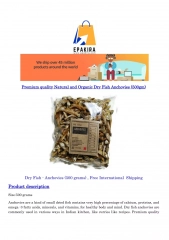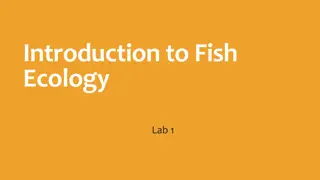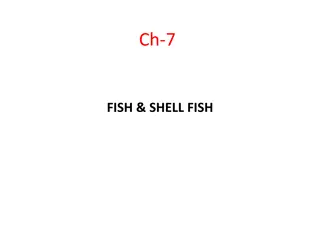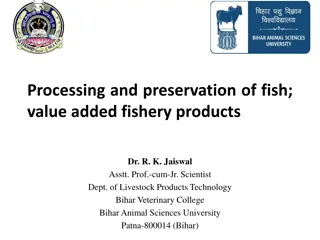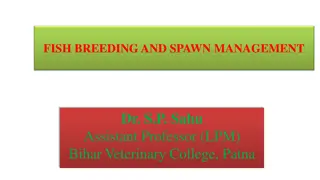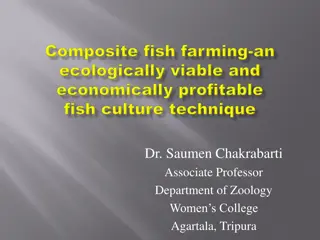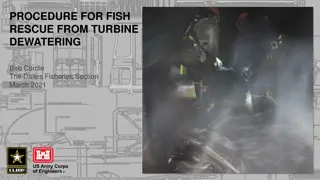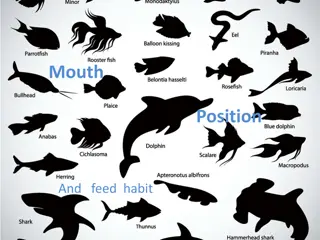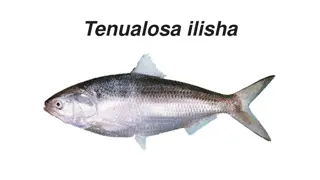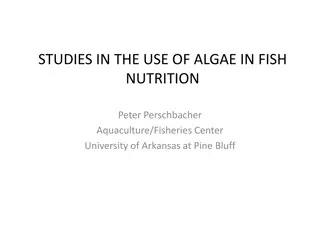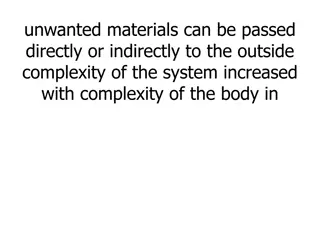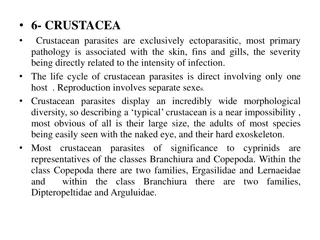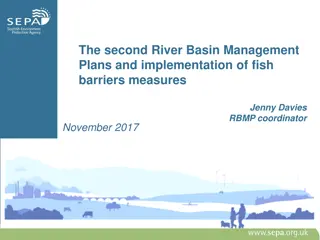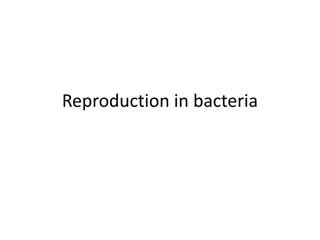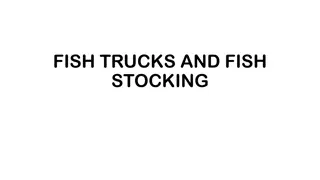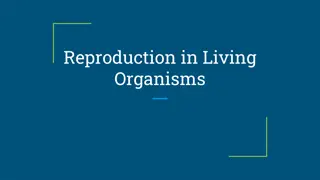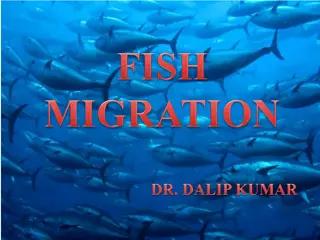Fish Reproduction Management Process
This detailed guide outlines the steps involved in managing fish reproduction, including isolating mothers, sterilization, hormone preparation, anesthesia, and egg collection. The process involves careful monitoring and specific procedures to ensure successful reproduction in fish farms.
Download Presentation

Please find below an Image/Link to download the presentation.
The content on the website is provided AS IS for your information and personal use only. It may not be sold, licensed, or shared on other websites without obtaining consent from the author.If you encounter any issues during the download, it is possible that the publisher has removed the file from their server.
You are allowed to download the files provided on this website for personal or commercial use, subject to the condition that they are used lawfully. All files are the property of their respective owners.
The content on the website is provided AS IS for your information and personal use only. It may not be sold, licensed, or shared on other websites without obtaining consent from the author.
E N D
Presentation Transcript
Isolate mothers from males and females Isolate mothers with good characteristics in terms of external appearance, provided that their weight is not less than 3 kg for females and 2 kg for males . Isolation of females from males after examining them for sexual maturity. Sterilize mothers with saline at a concentration of 3% for a period not exceeding 5 minutes.
Transfer of female and male mothers to the internal hatchery ponds Conducting a weighing process for males and females separately to determine the amount of hormone to be given to each fish. Monitor fish periodically and measure the temperature of the water continuously for the purpose of preparing them for anesthesia and hormone injection. Preserving it from external influences (noise or lighting).
anesthesia process Preparing the narcotic substance (cloves) Prepare special ponds for the anesthesia process
The use of clove in the amount of 50 g / 100 liters Fish monitoring for the purpose of completing the anesthesia process.
Hormone preparation The amount of the hormone is determined after determining the weight of the fish. It is preferred that fish weights be close.
Injecting the female with hormone Conducting hormone injection into anesthetic fish after fixing the fish correctly. The injection is performed under the shoulder fin or above the lateral line. Give the first dose 10% of the amount of the hormone. Give the second dose 90% of the hormone 12 hours after the first injection.
Continuous monitoring of mothers Continuous monitoring of females after a period of 8-9hours and more. The period between the injection and the occurrence of ovulation is mainly related to the temperature. 13-16h /18c 12-15 h / 20c 11-14 h / 22c 11-13 h /23c 10-12 h /25c
collecting eggs The process of collecting eggs is done by conducting a light massage of the abdomen and the direction of the genital opening. The eggs are collected in dry plastic containers.
Male semen extraction Collect the male semen in a glass beaker. Add semen to the eggs in an amount of 10 ml per 1 kg of eggs Mix the semen with eggs to complete the fertilization process with duck or turkey feathers for a period of 2-3 minutes.
Preparing the egg wash liquid 10 liters of hatchery water Add 30 grams of urea Add 40 grams of pure iodine-free table salt
Wash Fertilized eggs with water Cover the eggs with the washing solution. Stir the eggs continuously for a period between 50-60 minutes. Replace the water continuously every 4-5 minutes. The process continues until the wife is removed. The increase in the size of the eggs and their lack of adhesion indicates the end of the process.
Tannin solution Add one gram of tannin to every liter of water. The substance of tannin makes the eggs hard and increases the inner wall of the eggs. Washing eggs with plain water to get rid of tannin The process takes 40-50 seconds.
Transfer the fertilized eggs to the glass incubators Laying 100-150 g of fertilized eggs per incubator. The eggs are laid in the incubator completely quietly after filling the zoker in half with water. The flow rate of water entering the incubator is determined slowly for the first 12 hours. Other types of carp differ in the amount of eggs, as 50-70 grams of eggs are placed for each incubator, while keeping the flow rate of water as low as possible.
Incubation period for eggs The eggs remain in the incubators for a period of 3-5 days. Monitor eggs to remove spoiled eggs. Egg sterilization with malachite green. Hatched larvae can be seen attached to the walls of the incubator.
Transfer of larvae to the large incubators The larvae are incubated in the large incubators for a period of 24 hours without feeding and depend on the yolk sac for their food. 250-300 larvae are placed per incubator. The larvae are artificially fed when swimming horizontally.
Larvae feeding inside incubators The larvae are fed with a boiled egg yolk emulsion. One egg yolk for each incubator after emulsifying. The feeding process continues once every four hours for a period of 3 days. Transfer the larvae to the ponds.
Larvae feed inside ponds The larvae in the first days are fed with soybean emulsifier 5 kg /million larvae. The quantity increases every 3 days. After 20 days, the larvae are fed with crushed fodder. When it reaches a weight of one gram, it is preferable to transfer it to basins with a larger area and less density.


